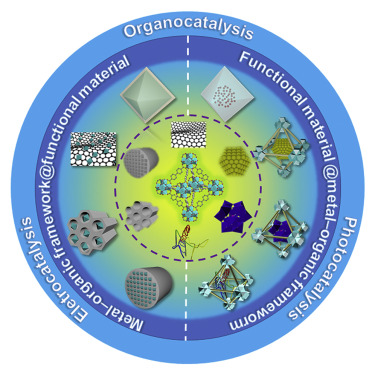
Title: Connecting Chemistry and Imagination: Educating on Supramolecular Science with Papercraft MOF Models
In an exceptional blend of scientific advancement and artistic imagination, Ryo Horikoshi from Okayama University of Science in Japan has discovered an efficient and captivating method to teach the intricate realm of supramolecular chemistry—by utilizing papercraft models of metal-organic frameworks (MOFs) and coordination cages. This interactive technique, recently featured by Chemistry World, is revolutionizing how students comprehend these elaborate chemical configurations.
What Are MOFs?
Metal-organic frameworks (MOFs) represent a category of crystalline materials made up of metal nodes interconnected by organic linkers. Renowned for their extensive surface area and adjustable characteristics, these porous structures are advantageous for uses such as gas storage, catalysis, and drug delivery. Often referred to as “molecular scaffolding,” their sophistication can pose challenges for students to visualize—particularly when depending exclusively on two-dimensional illustrations or computer models.
From Paper to Framework
Horikoshi’s educational innovation arose from a need to clarify this complexity. Through meticulously crafted papercraft models, students can create tangible representations of MOFs and molecular cages such as HKUST-1, UiO-66, and MOF-5. These models illustrate vividly the assembly of metal centers and organic linkers in forming three-dimensional frameworks.
“The act of physically constructing the models aids students in grasping the geometry and interconnectivity within these frameworks,” Horikoshi shares in his interview with Chemistry World. He added a humorous remark about his creative process: “I worked on it bit by bit, with the assistance of a beer.”
Teaching Tool with a Tangible Impact
The advantages of this method extend beyond mere engagement. Supramolecular chemistry—which involves intricate assemblies maintained by non-covalent interactions—can be particularly intimidating for students who find abstract concepts challenging. Horikoshi notes that his papercraft models have been crucial in enabling these students to cultivate a more instinctive comprehension of how building blocks self-assemble into complex chemical structures.
Constructing the models promotes active learning, accuracy, and spatial understanding. Students can manipulate the models to explore symmetry, pore structure, and connectivity, reinforcing lessons on coordination chemistry and crystalline symmetry vital to MOF functionality. By building models in a classroom environment, students also engage in collaboration and collective problem-solving—a genuine reflection of scientific teamwork.
Templates for the Classroom and Beyond
Acknowledging the broader educational opportunities presented by his creations, Horikoshi has made his papercraft templates available for free in the supplementary materials of his published article in the Journal of Chemical Education. These templates offer step-by-step instructions for constructing models of three key MOFs:
– HKUST-1: A copper-based MOF recognized for its open metal sites and gas adsorption properties.
– UiO-66: A zirconium-based framework esteemed for its thermal and chemical resilience.
– MOF-5: A zinc-based framework that is among the earliest and most extensively researched of its type.
The templates are crafted to be user-friendly for students, making them appropriate for both secondary- and university-level education. Whether employed as individual projects, group tasks, or even science fair submissions, these papercraft MOFs present educators with a versatile resource to ignite curiosity and comprehension.
Papercraft in the Broader Context of Chemistry Education
Horikoshi’s venture mirrors an increasing trend in chemistry education centered on tactile, visual, and imaginative learning approaches. As digital tools become more prevalent in the academic sphere, the worth of analog, craft-oriented techniques emerges as a valuable enhancement—especially in fields like chemistry, where spatial reasoning and molecular visualization are essential.
Although the models may appear playful, their educational significance is substantial. They make advanced chemical concepts more accessible, making science not only easier to grasp but also more enjoyable.
Conclusion
By integrating STEM content with the craft of papercraft, Ryo Horikoshi has transformed the abstract into the concrete, the complex into the understandable, and an ordinary science lesson into an interactive experience of molecular architecture. As more educators embrace this technique, students worldwide may soon find themselves folding and connecting their way to deeper insights into the unseen world at the nanoscale.
Templates to initiate your own papercraft MOFs can be accessed in Horikoshi’s publication “Supporting Information” through the American Chemical Society: https://pubs.acs.org/doi/10.1021/acs.jchemed.4c01312
Happy building—and learning!